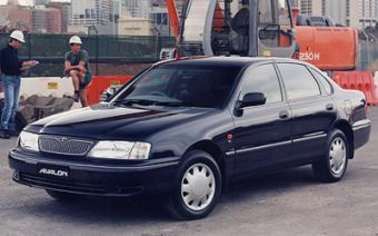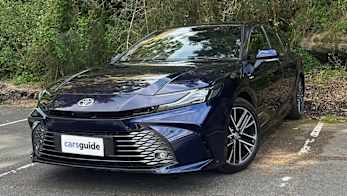At first it was hoped that Toyota was going to have a real crack at the big Aussie car market when it dropped the Avalon into its showrooms in 2000. But it's now hard to believe the company was serious about taking on the big two at their own game.
That's not to say there's much wrong with the Avalon but there's not a lot that would convince a traditional Falcon or Commodore buyer to switch brands. The Avalon was, at the very least, able to appeal to Toyota Camry drivers seeking a bigger car and keep them driving Toyota.
MARKET WATCH
Toyota chose an outdated US model to be sold here as the Avalon and adapted it for local conditions. The Avalon was to be the Camry's big brother, built alongside the Camry at Toyota's Melbourne plant. There were lots of detail changes to make use of parts readily available from the Camry.
Apart from a new grille the styling remained pretty much the same as the US model and being roughly five years old at the launch it was very dated. Add to that Toyota's penchant for bland designs, at least on its mainstream family cars and you have the recipe for a car that blends beautifully into the background.
The Avalon was wider and longer than the Camry, with considerably more leg room front and rear, and only a few millimetres shorter than the Commodore. There was just one engine available but that was the refined 3.0-litre overhead cam fuel-injected V6 which also powered the Camry.
Peak power was 145kW at 5200rpm and 284Nm at 4400rpm. The only transmission was a four-speed auto. The Avalon will accelerate to 100km/h in 8.9 seconds and cover the standing 400m sprint in 16.5 seconds – both times comparable to those posted by the Commodore and Falcon.
One huge difference between the Avalon and the big two was in the drive, the Avalon driving through the front wheels instead of the rear as local tradition dictates.
On the road the Avalon was smooth and refined with little wind or road noise. The interior was well laid-out and functional if not terribly attractive, dominated as it was by bland plastics and trim.
Entry model was the Conquest, with an adjustable column, dual front airbags, trip computer, super sound system and central locking. Airconditioning was an option. The CSX added side airbags in the front, airconditioning, ABS, cruise and CD sound. The VXi boasted even more and the Grande had the lot.
IN THE SHOP
With early Avalons getting up to the mileage where they need a major service it's important to check the service record. If it's showing about 100,000km make sure the major service has been done, or you can perhaps negotiate that into the price.
Generally the Avalon performs the way most Toyotas do &#!50; very reliably. Front tyre wear can be a problem so look carefully at the tyres and that means front and rear because heavily worn front tyres may have been switched to the rear.
Brake wear seems reasonable, but be prepared to replace pads, and maybe machine the discs at 50,000 to 70,000km. Other than those relatively minor issues, the Avalon is a rugged and reliable car that remains tight over the years and develops few squeaks or rattles.
OWNERS' VIEWS
David Courtney drives an Avalon as a company car. He likes the interior and boot space, comfort, performance and fuel economy and its impeccable reliability. His only criticism is its blandness.
Darren McMurray has overcome his reservations about the styling with a good set of alloy wheels, a rear spoiler and the optional mesh grille, all of which were Toyota options to give the car true street cred.
Toyota Avalon 2000: Conquest
| Engine Type | V6, 3.0L |
|---|---|
| Fuel Type | Unleaded Petrol |
| Fuel Efficiency | 11.5L/100km (combined) |
| Seating | 5 |
| Price From | $1,980 - $3,080 |
Pricing Guides








.jpg)

.jpg)













.png)



